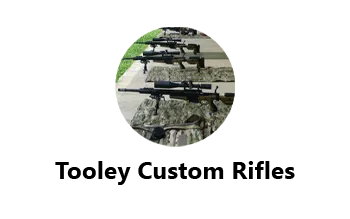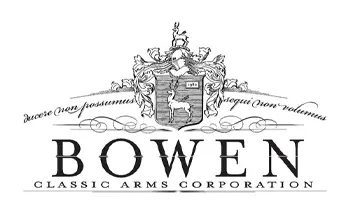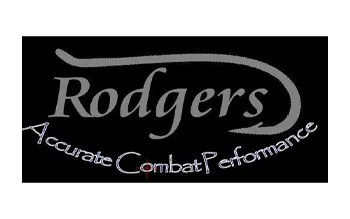Pre-fit Barrel Headspacing
This is a topic that we often get questions about. Before we dive into it, let’s go over the proper use of headspace gages first.
Using Headspace Gages
Headspace gages should always be used with a stripped bolt. A spring-loaded ejector will make it much more difficult to take reliable readings with your headspace gages. Some extractors are also problematic. They can force the gage to the side, preventing the shoulder cone of the gage from seating properly in the shoulder cone of the barrel. This also will cause unreliable or incorrect headspace readings.
The bolt should never be forced closed on a headspace gage. Gravity on the bolt handle is the correct amount of force.
What if the bolt handle closes on halfway on the GO gage? Technically, it is a little shy of minimum headspace, functionally it is close enough. You are less than a few .0001’s from fully closing. The bolt should not engage the lugs on the NO GO.
IMPORTANT: Never tighten the barrel or barrel nut with the bolt closed on a headspace gage! The headspace gage is hardened tool steel. It is not going to give. At best, you may make it impossible to open the bolt. At worst, you will damage the bolt lugs, action lug abutments, and/or the barrel.
Types of Pre-fit Barrels
Pre-fit barrels come in two general varieties, Shouldered or Barrel Nut. Shoulder pre-fit barrels are simpler to install but have had more complex machine operations performed in their manufacture. To be honest, I am not sure a barrel nut type barrel should be called a “prefit”. It is already chambered and threaded, but you are going to do all of the fitting. More on that below.
Headspacing Shouldered Pre-Fit Barrels
Shouldered pre-fit barrels are made for a specific action or family of actions. The manufacturer sets the headspace by maintaining the correct relationship between the exterior barrel shoulder (that fits up against the action face) and the internal chamber shoulder for the specific action that the barrel was intended for. A shoulder pre-fit barrel has no user adjustment. If your action uses a washer type recoil lug, you place that on to the barrel and thread the barrel into the action. Some companies will send a recoil lug with the barrel. If your action has an integral recoil lug, then it is even simpler, just thread the barrel on. Be sure to follow the instruction provided by your barrel maker regarding the use of grease or anti-seize compound on the barrel threads.
Once assembled, tighten the barrel to the action to the manufacturer recommended torque specs. The last thing to do is to check your headspace. As noted, there is no adjustability. At first this may sound sub-optimal, but a shoulder to action face joint will be stronger and provides a simpler and more robust joint to the action. As long as the chambering and threading has been done accurately AND you have the correct action for the barrel AND the action is in good condition, your headspace should fall between the GO- and NO-GO gages.
Headspacing Barrel Nut Pre-Fit Barrels
Barrel Nut pre-fit barrels may require a little trial and error to get the headspace correct. The reason is that the barrel may turn with the barrel nut as the nut is tightened to the torque spec. Your headspace gages will come in handy as you are assembling the barrel to the action. Again, you will want to follow the barrel manufacturers recommendations regarding the use of grease or anti-seize of the threads and also about the amount of torque on the barrel nut.
Assemble the barrel nut onto the barrel. The recoil lug may already be pinned to the action or your vice may have a locating cutout to properly position the recoil lug. If so, that will make the rest of the process easier. If not, you may also have to endure a little trial and error to get both the headspace set and the recoil lug washer positioned correctly.
You can use the GO gage to very lightly snug the barrel to the action and then snug the barrel nut and if needed position the recoil lug. Do this by hand, not with a wrench. Once you have everything positioned correctly, open the bolt, and remove the gage.
If you feel any resistance opening the bolt after you have everything hand tight, back the barrel out a little bit. How much? With an 18 TPI barrel, if you rotate the barrel about as far the minute hand moves in one minute on a clockface (1/60th of a turn), you will change the headspace about .001”. It will not take much rotation to change headspace significantly.
After slightly tweaking the barrel, does the bolt open and close on the GO gage easily. If yes, does the NO GO gage prevent the bolt from closing. If that is also true, remove the headspace gage and tighten the barrel. And then recheck the headspace. You may find that the GO gage will no longer allow the bolt to close, or that the bolt can now close on the NO GO gage. This is the result of the competing forces acting upon the barrel as you tightened the nut.
If the bolt will not easily close on the GO gage (remember, never use force to close the bolt on a gage), it is likely that the barrel has rotated a small amount as the barrel nut was tightened. Loosen the barrel nut and reposition everything as above. At this point, there are two paths; The first is try to better immobilize the barrel as you tighten the barrel nut. If the barrel can be prevented from turning as the nut is tightened, that should solve the issue. If not, then the way forward is to give the barrel a little more clearance on the GO gage before tightening. The barrel will probably rotate about the same amount each time you tighten the nut, so you should be able to time that rotation and bring the barrel into proper headspace with one or two tries.
If the bolt can close on the NO GO gage after the barrel nut is fully tightened, the problem is different and the solution is basically the opposite. The problem is that as the barrel nut is tightened, it is drawing the barrel out of the action slightly, increasing the headspace. The solution is to set the barrel a little tighter than GO to begin with and then tightening the barrel nut will bring it into proper headspace.

Written by Ray Gross – Manson Precision Reamers
August 2024
Website: www.MansonReamers.com
Email: support@mansonreamers.com









































